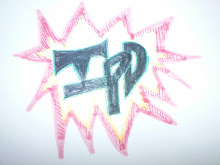Firstly the definition of document design according to Shriver (1997) it is the field concerned with creating texts integrated words and pictures. Comparison between my group and my individual presentation, I realize that there is one point, or what is known as element that I would probably not change, which is consistency. According to Reep (2006, pp. 134) there are four major elements to what is a good document design 1) Balance, 2) Proportion, 3) Sequence and 4) Consistency. The reason for me not changing the style of my presentation in future is due to that consistency helps readers emphasizing similar types of information and the similar importance of a document (Reep 2006). For example, my group presentation (Diagram 1) slide background (despite the first page), were consistent in away where the background images, layout and colour are consistent.
However, my group presentation has a lack of balance, according to Putnis and Patelin (1996 pp. 254) the importance of balancing the document between images and text is to capture reader's attention. An example (Diagram 2) of my group presentation showing only one short sentence without any images, therefore audience might not understand the presentation because of not having any visual to support my saying.
Similarly, Reep (2006, pp. 135) stated that the balance in a good document design should have equally balance of image and text. For that reason, I have changed my individual presentation to a more 'balance document'. In Diagram 3 shows the balance between texts and images whereby I can relate my points by using the images to support my saying.
On the other hand, my group presentation uses capitalization incorrectly. According to Bird (2001), mixing up uppercase and lowercase letters is a pitfall for document design. Based on my group presentation (Diagram 4), the title is incorrect and is unsuitable as it can confuse readers and seemingly unprofessional.
(Diagram 4)
Therefore my individual presentation changes in away to avoid any mistakes I made. In Diagram 5 I use Broadway font style and did not mix the upper and lowercase, instead I uses Kathy's (1997) recommendation, sentence case whereby capitalizing the first letter of the phrase only.
References
1. Bird, L 2001, ‘Avoid the mistakes of power point rookies’, Office Computing, vol. 12, no. 1, pp. 62-65,
2. Kathy, B 1997, ‘How to Optimize Projection Technology: Using Fonts, Graphics, and Color to Maximize the Effectiveness of Your Presentation’ Syllabus, viewed 21 April 2009, <http://its.uiowa.edu/support/srs/images/powerpoint_tips2.pdf>
3. Putnis, P and Petlin, R 1996, ‘Professional Communication: principles and applications’, Writing to communicate, Prentice hall, Sydney.
4. Reep, DC 2006, ‘Ch 6: Principles of Document Design,’ Technical Writing, 6th ed., Pearson Edu Inc., New York, pp.133-170.
5. Schriver, KA 1997, ‘Dynamics in Document Design’, The interplay of words and pictures, Ch. 6, pp. 361-441, Wiley Computer Pub, New York.






